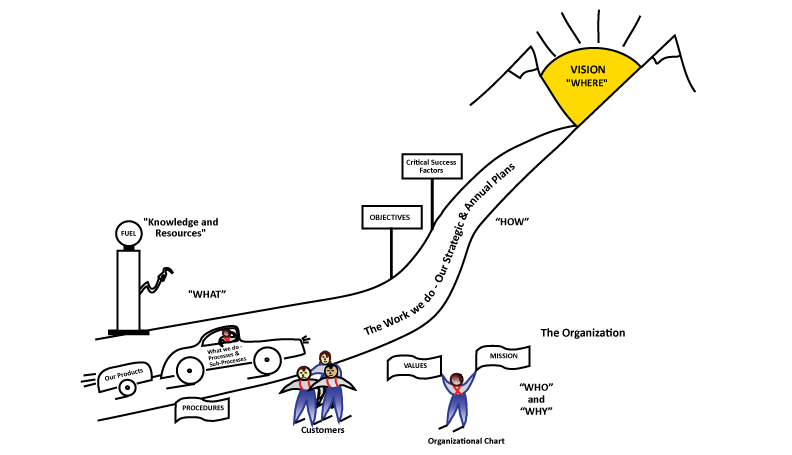October 2017 - The FoCuSeD™ Facilitator eNewsletter

Applying Agile Concepts to Strategic Planning, by Gary Rush, IAF CPF
The Agile Manifesto may have been written initially for software, but its application to Strategic Planning works and it changes Strategic Planning from an event into a process. So, why not apply Agile concepts to Strategic Planning? I believe that planning should be a process not an event. See “Swift” Strategic Planning.
I facilitated an Agile Strategic Plan for a group of organizational leaders who had hired a consultant a few years prior and the plan wasn’t working for them. The consultant took the leaders off-site for a week to work out their plan. The plan ended up being 84 pages long with loads of Baldrige Key Performance Indicators, but the plan ended up as “shelfware” for two years. The leaders wanted me to develop the plan a different way, so I applied Agile values to make the plan useful, as follows:
- Individuals and interactions over processes and tools.
- Working software (plan in this case) over comprehensive documentation.
- Customer collaboration over contract negotiation.
- Responding to change over following a plan.
First of all, we set a plan target of four pages long – the length of the U.S. Constitution. That’s adhering to the second value – working plan over comprehensive documentation. Reading 4 pages, versus reading 84 pages, makes a big difference. It also means that it makes it easier for the stakeholders to absorb and understand the plan, making it useful.
Looking at the first value, individuals and interactions over processes and tools, we developed the plan in facilitated workshops. Structuring the workshops to include multiple layers of leadership as participants incorporated the third value, customer collaboration over contract negotiation. We kept it simple, i.e., no complex processes. The leaders of the organization knew their industry – if not, strategic planning was not the solution to a lack of industry knowledge.
We further followed the Agile values by scheduling the facilitated workshops to last 4- to 8-hours to occur once a month. That meant that we never attempted to hammer out the entire plan in one workshop and each workshop began by reviewing the feedback and suggestions. We defined each “sprint” to define a portion of the plan, e.g., a complete Mission statement or a complete Vision, or a complete SWOT. In between, the leaders took what they had developed and shared it with others gathering feedback and suggestions. This brought in stakeholder collaboration and interaction.
Finally, once the Agile Strategic Plan was complete, the organization leaders defined a process for continuous review. They assigned a person to manage the plan and they reviewed the plan at every monthly staff meeting. The review was for progress, changes, and additions – i.e., it was a living plan and never “complete”. That supported the fourth value of responding to change over following a plan.
In addition to following the Agile values, we also were able to follow the Agile principles. Our measure of success was the plan. We provided continuous delivery of a working product and welcomed changes through the iterative workshops (“sprints”). Stakeholders were involved and leaders were motivated in a supportive environment. Face-to-face conversations were the norm in gathering feedback and suggestions. Sustainable development was accomplished through short, iterative workshops with continuous attention to excellence, good design, and simplicity enabling the plan to be useful. In the facilitated workshops, the leaders drove the process and we began each workshop with a reflection on previous work to improve following work.
Developing a Strategic Plan once a year and then waiting until the next planning cycle to update, makes no sense – the world doesn’t wait. ![]()